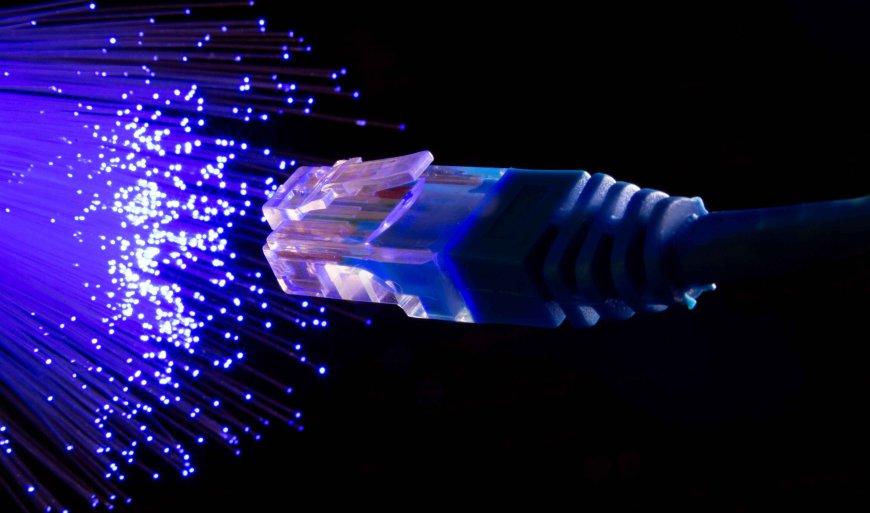Fiber Optics in Healthcare: A Game Changer
The healthcare industry is evolving rapidly, and the adoption of advanced technologies is reshaping how care is delivered.

Introduction
The healthcare industry is evolving rapidly, and the adoption of advanced technologies is reshaping how care is delivered. Among these technological breakthroughs, fiber optics stands as a revolutionary force. Used in a variety of medical applications, fiber optics is enhancing diagnostics, improving surgical precision, and transforming patient monitoring systems. As the demand for more efficient and faster healthcare solutions grows, fiber optics continues to be a critical enabler, driving innovation and improving patient outcomes.
What Are Fiber Optics?
Fiber optics refers to the use of thin strands of glass or plastic to transmit light signals over long distances. The unique structure of these fibers allows data to travel at incredibly high speeds with minimal signal loss. Traditionally used in telecommunications and internet infrastructure, fiber optics have now entered the medical field, where precision and speed are essential.
Key Applications of Fiber Optics in Healthcare
1. Advanced Imaging and Diagnostics
One of the most important applications of fiber optics in healthcare is in medical imaging. Fiber optic technology allows for the creation of high-resolution, detailed images inside the human body. Endoscopes, which are devices used to explore the internal organs, rely heavily on fiber optics to transmit images from inside the body to an external monitor. These images are crucial in early diagnosis of diseases, such as cancer or gastrointestinal disorders.
Additionally, fiber optics are used in optical coherence tomography (OCT), a technique that provides real-time, 3D images of tissues. OCT is widely used in ophthalmology to detect conditions like glaucoma and retinal disorders. The clarity and precision offered by fiber optics make these diagnostic tools invaluable for medical professionals.
2. Surgical Precision and Minimally Invasive Procedures
Fiber optics also play a vital role in minimally invasive surgeries. Traditionally, surgeries required large incisions, which led to longer recovery times and a higher risk of complications. With the advent of fiber optics, surgeons can now perform procedures through small incisions using tools guided by fiber optic imaging. This approach significantly reduces recovery time, minimizes scarring, and lowers the risk of infection.
Laser surgeries, powered by fiber optics, are also becoming more common. Surgeons can target tissues with extreme precision using fiber optic lasers, resulting in better patient outcomes and fewer side effects. These procedures are commonly used in eye surgeries, cancer treatments, and cardiovascular procedures.
3. Enhanced Patient Monitoring
Fiber optic technology is revolutionizing patient monitoring systems by providing real-time data with greater accuracy. Fiber optics are used in the creation of sensors that monitor vital signs such as heart rate, oxygen levels, and blood pressure. These sensors are not only more accurate but also less invasive, providing a more comfortable experience for patients.
In critical care environments, where precise and continuous monitoring is essential, fiber optic sensors ensure that healthcare professionals can respond quickly to any changes in a patient’s condition. This has been particularly useful in intensive care units (ICUs) and during complex surgical procedures where even the slightest change in a patient's vitals can be critical.
4. Telemedicine and Data Transfer
With the growing popularity of telemedicine, the need for fast and secure data transfer has become increasingly important. Fiber optics provide the infrastructure necessary for high-speed internet connections that allow for real-time consultations between doctors and patients, regardless of location. This has been particularly important in rural or underserved areas where access to healthcare professionals is limited.
In addition to telemedicine, fiber optics also play a role in the secure transfer of medical records and other sensitive data. The technology ensures that data can be transmitted quickly and securely, reducing delays in treatment and improving the overall quality of care.
Challenges in Implementing Fiber Optics in Healthcare
While fiber optics offer numerous benefits, there are also challenges to their widespread implementation in healthcare. One of the primary barriers is cost. The installation of fiber optic systems can be expensive, especially in older healthcare facilities where existing infrastructure may need to be replaced. Additionally, training healthcare professionals to use fiber optic-based devices and systems can take time.
There are also concerns about data security. As fiber optics are used for high-speed data transmission, protecting patient privacy and maintaining compliance with regulations like HIPAA (Health Insurance Portability and Accountability Act) is crucial. Healthcare providers must invest in cybersecurity measures to ensure that sensitive information is not compromised.
The Future of Fiber Optics in Healthcare
Despite the challenges, the future of fiber optics in healthcare looks promising. As the cost of fiber optic technology decreases and more hospitals adopt these systems, the benefits will continue to grow. The ability to provide faster, more accurate diagnoses and safer, less invasive surgeries will undoubtedly transform patient care in the coming years.
Moreover, advancements in artificial intelligence (AI) and machine learning could further enhance the capabilities of fiber optic technologies in healthcare. For example, combining AI with fiber optic imaging systems could allow for automated diagnosis of certain conditions, reducing the workload on healthcare professionals and speeding up treatment processes.
Conclusion
Fiber optics have proven to be a game changer in healthcare, offering unmatched precision, speed, and reliability in a wide range of applications. From enhancing imaging and diagnostics to enabling safer surgeries and improving patient monitoring, the impact of this technology is profound. As fiber optics continue to evolve and become more accessible, their role in revolutionizing patient care will only expand, bringing us closer to a future where healthcare is more efficient and effective for all.

 muteebseo1
muteebseo1